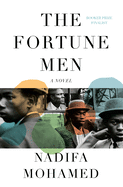
| Publisher: | Knopf | |
| Genre: | General, Thrillers, Biographical, Fiction, Historical | |
| ISBN: | 9780593534366 | |
| Pub Date: | December 2021 | |
| Price: | $27 |
| Starred | Fiction |
by Nadifa Mohamed
One of the greatest miscarriages of justice in British history is the subject of The Fortune Men by Nadifa Mohamed (The Orchard of Lost Souls), a finalist for the 2021 Booker Prize. In 1952, Somali immigrant Mahmood Mattan was executed in Wales for the murder of a Jewish shopkeeper. The Mahmood in this riveting fictionalized account is "a quiet man, always appearing and disappearing silently," a trait that earns him the nickname the Ghost. Married to a white woman, Mahmood has worked as a sailor and still hangs around the Cardiff docks, but his recent employment has been confined to "foundry work and poky little boilers in prisons and hospitals." When Violet Volacki, a Jewish spinster and "modest Cardiff shopkeeper," is murdered at the door of her store, Mahmood is taken into custody.
What follows is a combination murder mystery, courtroom drama and trenchant commentary on racism. The Fortune Men is a sweeping indictment of British jurisprudence and the many forms prejudice can take: the detective determined to bring Violet's killer to justice even though Violet was "obviously not a Christian"; white people who hated it when a Black person "took one of their women" for his wife. Most poignant of all is the portrait of Mahmood, a proud Muslim who retains his hope and humanity even in the face of the most brutal of injustices. --Michael Magras, freelance book reviewer
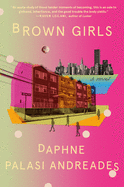
| Publisher: | Random House | |
| Genre: | Women, Literary, Coming of Age, Fiction | |
| ISBN: | 9780593243428 | |
| Pub Date: | January 2022 | |
| Price: | $24 |
| Starred | Fiction |
by Daphne Andreades
Daphne Palasi Andreades's titular Brown Girls live in "the dregs of Queens." They are Jamaican, Dominican, Pakistani, Filipino, Chinese. They are ambitious and bold and sometimes afraid of what the world might hold for them. They tell their story in Andreades's debut novel with a blazingly original collective voice.
Brown Girls begins when the girls are navigating the hallways of elementary and middle school, walking the neighborhood together. In brief chapters with titles like "Family Parties" and "Your Own Kind," she takes readers through the girls' shared journey to young adulthood. Some of them leave Queens for prestigious high schools in Manhattan, making the trek on the train to a different life, a different world, every weekday for years.
Andreades follows her characters through college, graduate school, additional training for their careers as nurses, teachers, bookkeepers, PR executives, professors. She sensitively explores the rifts that arise between the girls who build lives in the neighborhood--out of choice or necessity--and the girls who manage to get out. In some ways, Andreades's characters are of course particular: brown girls from immigrant families who hail from all over the globe, living at the back end of Queens in the early years of the 21st century. In some ways their stories are absolutely their own: Nadira, Kim, Zainab, Trish, fighting for their individuality in a society that tries to meld them together.
Told with crackling prose and vivid detail, with humor so sharp it cuts, Brown Girls is a tribute to a neighborhood most people forget, and a group of young women determined to make their mark on an indifferent world. --Katie Noah Gibson, blogger at Cakes, Tea and Dreams
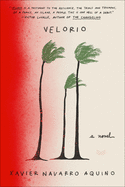
| Publisher: | HarperVia | |
| Genre: | Hispanic & Latino, Family Life, Disaster, Literary, Fiction, Siblings | |
| ISBN: | 9780063071377 | |
| Pub Date: | January 2022 | |
| Price: | $26.99 |
| Fiction |
by Xavier Navarro Aquino
Velorio is an ambitious, movingly lyrical debut novel from Xavier Navarro Aquino that looks at the real-life tragedy of Hurricane Maria's impact on Puerto Rico through a grief-soaked, phantasmagorical lens. The novel alternates between bitter despair and glimmers of hopefulness and community, reflecting on the extent to which Puerto Ricans feel abandoned and abused, both by their own government and by the rest of the world. Velorio begins soon after the hurricane subsides, when Camila finds that her sister, Marisol, has been killed by a mudslide. Camila sets off to find "the people that would return things back to how they were," taking the corpse of her sister, who Camila cannot believe is dead even as Marisol begins to decompose.
Marisol's fate is only a hint of the tragic strangeness to come, which draws multiple characters into the makeshift cult leader Urayoán's attempt to form a utopian community in the mountainous center of Puerto Rico. The effort is ominous from the start, with Urayoán employing bands of teenagers and children dressed in red, wearing black surgical masks, as his muscle. To Puerto Ricans feeling abandoned in the wake of the hurricane, all-too-accustomed to the island's metaphorical and physical decay, even Urayoán's twisted vision can seem like a viable alternative.
While Urayoán's paradise follows a familiar course, becoming increasingly violent and Hobbesian as the novel progresses, the prose is distinctive and dreamlike. Velorio has apocalyptic fires and savage violence, but its most powerful moments are the quiet, searching ones, where Navarro Aquino reflects on the island's history of being "taken and given like the final play in a losing game of dominoes." --Hank Stephenson, the Sun magazine, manuscript reader
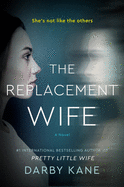
| Publisher: | Morrow | |
| Genre: | Psychological, Domestic, Suspense, Thrillers, Fiction | |
| ISBN: | 9780063117808 | |
| Pub Date: | December 2021 | |
| Price: | $16.99 |
| Mystery & Thriller |
by Darby Kane
In her second psychological thriller, The Replacement Wife, Darby Kane (Pretty Little Wife) doubles up the action with two unreliable characters caught up in gaslighting, family secrets and betrayal.
Until recently, Elisa Wright had a close relationship with her charming brother-in-law, Josh Wright. But she begins to wonder if he could be a killer: seven months ago his fiancée, Abby Greene, disappeared without a trace, just a few days before their wedding. Now he's involved with another woman, Rachel Dunne, with seemingly no regard for the whereabouts of Abby, whom Elisa considered a friend. Josh's and Elisa's mental states ramp up the suspense in each scene. Elisa's discussions with Josh erupt into loud arguments, with Josh and her husband, Harris, insisting she get therapy. They maintain Elisa continues to be emotionally fragile because of a violent act at her former job. As Elisa investigates Josh, he pushes back, trying to make her think she is losing her mind. Secrets emerge about Josh's past, including circumstances around the death of his first wife.
Kane skillfully explores the dual natures of her characters in the absorbing The Replacement Wife. Josh seems both believable and deceitful, while Elisa appears stable, then occasionally in the throes of a mental breakdown. Elisa's devotion to her seven-year-old son, Nathan, keeps her grounded, but she is constantly on tenterhooks about her marriage, believing that Harris would choose Josh over her. Kane further elevates the twists, making motives cloudy as Elisa becomes friends with Rachel. Trust becomes a chilling commodity. --Oline H. Cogdill, freelance reviewer
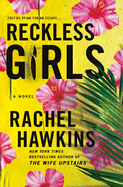
| Publisher: | St. Martin's Press | |
| Genre: | Women, General, Thrillers, Fiction | |
| ISBN: | 9781250274250 | |
| Pub Date: | January 2022 | |
| Price: | $27.99 |
| Mystery & Thriller |
by Rachel Hawkins
Rachel Hawkins follows up The Wife Upstairs with another twisty suspense novel. Set on an infamous but beautiful atoll just a few days sail from Maui, Reckless Girls contrasts the idyll of beach vacation life with a gothic sense of foreboding and plenty of dark secrets.
Lux has just been fired from her hotel housekeeping job when her privileged boyfriend, Nico, is hired to transport two college-age women to Meroe Island, known as a World War II refueling stop--and the site of a shipwreck that devolved into murder and cannibalism. When Lux and Nico arrive at Meroe with their passengers, Brittany and Amma, they're surprised to find another boat already there. Eliza and Jake are wealthy and glamorous, quick to share their seemingly endless supply of wine and food. At first, their two-week stay is the ultimate vacation, but then a menacing stranger arrives, setting off a chain of events that strains relationships and forces secrets into the open.
As tensions rise and murderous intentions are revealed, readers will frantically urge Lux to take her broken boat and flee, helpless to watch as the plot builds to an explosive conclusion. Hawkins uses the tensions among her young, beautiful characters to take a look at the intersections of class and gender, but there are no innocent people in this treacherous paradise. Fans of the film The Beach and television's Lost will be enthralled. --Suzanne Krohn, librarian and freelance reviewer
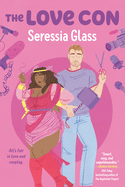
| Publisher: | Berkley | |
| Genre: | Romantic Comedy, Romance, Contemporary, Multicultural & Interracial, Fiction | |
| ISBN: | 9780593199053 | |
| Pub Date: | December 2021 | |
| Price: | $16 |
| Romance |
by Seressia Glass
Fans of cosplay and the friends-to-lovers and fake-dating tropes will adore Seressia Glass's captivating rom-com The Love Con. When Kenya Davenport is announced as a finalist in Cosplay or No Way, a reality show cosplay competition, she's pressured to name a significant other as her teammate for the last challenge. Back home in Atlanta, Ga., her best friend and business partner, Cameron Lassiter, is surprised but thrilled to hear her drop his name. Thus begins a fake-dating plot filled with secret pining, physical chemistry and big-hearted friendship.
While The Love Con is a romantic comedy with wide appeal, readers on the geekier side of the spectrum will be delighted by some of Glass's (Shadow Blade) gaming and comics references. " 'I'm going to cosplay so well as your boyfriend that even you will think it's the real deal!' [Cam promised.] Butterflies took flight in [Kenya's] belly but she ignored them, forcing herself to focus on the main objective, instead of indulging in a side quest."
Glass deftly balances the technical cosplay design and build elements with the romantic and character arcs. The Love Con brings the laughs and banter, and Glass shows off her character development, with Cam and Kenya dealing with complicated family dynamics, prejudice and their fear of ruining their friendship. Readers will be cheering for Kenya and Cam as they build a relationship every bit as epic as their couples cosplay. --Suzanne Krohn, librarian and freelance reviewer

| Publisher: | Counterpoint | |
| Genre: | Biography & Autobiography, Tennis, Racket Sports, Women's Health, Personal Memoirs, Health & Fitness, General, Sports & Recreation | |
| ISBN: | 9781640094765 | |
| Pub Date: | January 2022 | |
| Price: | $27 |
| Biography & Memoir |
by Scarlett Thomas
British writer Scarlett Thomas was accomplished and successful. A professor of creative writing and contemporary fiction at the University of Kent, she had published several popular novels (Oligarchy; Our Tragic Universe) and even a book on the craft of writing (Monkeys with Typewriters). However, by 2013--41 years old--she felt something was missing. She re-evaluated her life and choices made as a headstrong, rebellious youth who attended boarding school. She also mined the influences of a demeaning, paternal grandmother and a "devoted lefty," multi-married mother who provided Thomas with three fathers. In gazing back at the past, Thomas revived her competitive athletic spirit and a yearning to strive toward an unfulfilled dream. With the support of her encouraging partner, Rod, she set off on a quest to reclaim a hidden desire abandoned when she was 14 years old: to compete professionally in tennis and become a world-ranked player.
Intensity marks Thomas's beautiful memoir, which is a meticulously detailed, often darkly funny account of her hot pursuit of a dream deferred. Her mental toughness grows as she rails against emotional doubts, phobias and confidence problems. Along the journey, she faces opposition in the form of quirky hitting partners and coaches, naysayers and court competitors who psych her out.
Thomas's body of writing consistently features sharp, likable and captivating heroines who often riff incisively on the perils and glories of contemporary living and modernity with sarcastic wit and self-deprecation. With Thomas serving as narrator for the multi-layered, no-holds-barred odyssey of her ascent into middle age, she emerges as a top seed and the very best of them all. --Kathleen Gerard, blogger at Reading Between the Lines
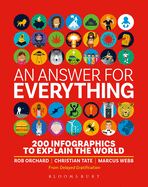
| Publisher: | Bloomsbury | |
| Genre: | Design, Graphic Arts, Illustration, Reference, Science, Anthropology, General, Social Science | |
| ISBN: | 9781526633644 | |
| Pub Date: | January 2022 | |
| Price: | $25 |
| Art & Photography |
by Delayed Gratification
An Answer for Everything is a fascinating volume that encompasses questions, data and design. Rob Orchard, Christian Tate and Marcus Webb launched the slow journalism magazine Delayed Gratification in 2011, and since then, the magazine has become known in part for its eye-catching infographics, which portray narratives about some of the world's biggest news stories in visually digestible ways. The authors write, "The world is a delightful, baffling, wondrous and worrisome place and for over a decade we've been using data to try to make sense of it," noting that the book collects updated infographics from the magazine along with new visualizations "to answer questions ranging from the serious to the silly."
While dominated by full-page illustrations with interwoven text, the book also includes a handy "how to navigate this book" section at the beginning, as well as a comprehensive index, so that the information inside can be parsed according to readers' interests. Whether that's who the greatest athlete is, how much it would cost to purchase everything in Vogue magazine, or deeper questions about climate change, global conflict and life as a human being, there is something to capture everyone's and anyone's attention here.
Orchard, Tate and Webb provide perhaps one of the most comprehensive overviews of what preoccupies the mind in this contemporary moment in a deeply attractive yet still data-driven way. Those who enjoyed David Macaulay and Neil Ardley's The Way Things Work series are sure to be enthralled by this volume. --Michelle Anya Anjirbag, freelance reviewer
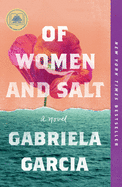
| Publisher: | Flatiron | |
| Genre: | Multiple Timelines, Hispanic & Latino, Sagas, Literary, Fiction | |
| ISBN: | 9781250776709 | |
| Pub Date: | January 2022 | |
| Price: | $16.99 |
| Now in Paperback |
by Gabriela Garcia
Strong women and the nuanced complexities of mother-daughter relationships that reverberate through generations are at the heart of Gabriela Garcia's debut novel. A Washington Post Notable Book of 2021, Good Morning America Book Club Pick and winner of the Isabel Allende Most Inspirational Fiction Award, Of Women and Salt spans 19th- and 20th-century Cuba into present-day Miami, Texas and Mexico. It captures five women's often fraught emotional connections to each other, their deepest secrets and their unresolved traumas.
Cuba, 1866: María Isabel is the only female employee at a cigar workshop in Camagüey. To break up the tedium of rolling cigars, Antonio reads from Victor Hugo's newest work, Les Misérables. One day, a letter arrives from Hugo himself, pledging to "speak up for Cuba as I spoke up for Crete," as conditions in Cuba begin to reflect the country's conflicts. With Antonio's help, María Isabel begins to understand the power of words and stories, and how books can provide comfort and strength during times of struggle. She accepts Antonio's offer to teach her to read and write, along with his marriage proposal.
Miami, 2014: Jeanette, the great-great-granddaughter of María Isabel, battles drug addiction, struggling to break free of the destructive influences of her past mistakes and her mother Carmen's stoic, controlling nature. The disappearance of Jeanette's El Salvadoran neighbor and her young daughter awakens her desire to visit Camagüey, and the 80-year-old grandmother she's never met. "I want to know who I am," Jeanette tells Carmen, "so I need to know who you've been."
Garcia, the daughter of Cuban and Mexican immigrants, portrays each of her characters' interconnected stories with a deeply personal understanding of the immigration experience as something that shapes a person's self-identity and sense of survival--if not for oneself, for one's children. --Melissa Firman
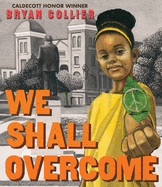
| Publisher: | Orchard Books | |
| Genre: | United States - African American & Black, People & Places, Music, United States - 20th Century, Juvenile Fiction, Performing Arts, Historical | |
| ISBN: | 9781338540376 | |
| Pub Date: | December 2021 | |
| Price: | $18.99 |
| Starred | Children's & Young Adult |
by Bryan Collier
Bryan Collier's We Shall Overcome uses the evocative lyrics of the famous gospel anthem of the civil rights movement to encourage readers to investigate the present-day racial injustices endured by Black people in the United States. Collier's striking artwork draws in young readers and invites them to engage with the text, the art, the music and the history.
Four-time Caldecott Honor recipient Collier (Trombone Shorty; The 5 O'Clock Band) uses powerful illustrations perfectly to blend the past and the present. His signature mix of collage, watercolors and double-page spreads creates a story that follows a Black girl in a yellow dress from home to school to a protest. The illustrations of the girl and her contemporary world are in color but, as she moves through her city, Collier places her within and alongside black-and-white images of people, places and events from the civil rights movement. Collier continues the motif used in All Because You Matter (written by Tami Charles) of a single flower petal shape to build "a blossoming effect." A single flower petal is a sign of peace on the cover, the girl's footprints are lines of flower petals and, eventually, she has wings made of dozens of flower petals--every one of them displaying the face of an ancestor.
The empowering lyrics of "We Shall Overcome" (derived from Rev. Charles Albert Tindley's song "I'll Overcome Someday" [1900]) and Collier's stirring illustrations are the perfect way to bridge the past and present. The book, like the song, acts as a rallying cry for people "to stand up and speak out against injustices so that there may finally be a day when we are all equal." --Natasha Harris, freelance reviewer
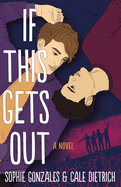
| Publisher: | Wednesday Books | |
| Genre: | Music, Romance, Contemporary, Own Voices, Young Adult Fiction, Performing Arts, LGBTQ+ | |
| ISBN: | 9781250805805 | |
| Pub Date: | December 2021 | |
| Price: | $18.99 |
| Children's & Young Adult |
by Sophie Gonzales, Cale Dietrich
In Sophie Gonzales's and Cale Dietrich's captivating and surprisingly raw novel, If This Gets Out, 18-year-olds Ruben Montez and Zach Knight are two of four members in the famous pop group Saturday.
Gay and Hispanic Ruben and bisexual and white Zach fall deeply in love while on tour promoting their new album. When they reveal their relationship to their record label, the executives tell them to keep their sexual identities and relationship under wraps for the time being. As the tour continues, the band manager keeps Ruben and Zach apart during on-stage choreography and prohibits interview questions that hint at their increasingly flirtatious behavior. All four members of the band are accustomed to their actions and appearances being tightly controlled by the label--not only is their squeaky-clean image part of their popularity, but also band mate Angel's alcohol and drug addiction results in dangerous, erratic behavior. When the teens realize that their label doesn't intend to support them after all, they are forced to decide whether they will lie to maintain the band's façade or come out publicly and face social and professional risks.
Gonzales (Perfect on Paper) and Dietrich (The Love Interest) encapsulate the all-consuming nature of young queer love. The chapters alternate between Ruben's and Zach's narration, poignantly highlighting their contrasting queer journeys: Ruben has known he's gay for years while Zach newly accepted his bisexuality and is hesitant to come out. Ruben notes, "Part of me wants to protect him from the realities of what it means to be queer, and how it changes things in a million subtle ways." The authors' story resonates with intensity as the celebrity teens gain agency and find their own voices. --Kieran Slattery, freelance reviewer, teacher, co-creator of Gender Inclusive Classrooms

| Publisher: | Feiwel & Friends | |
| Genre: | People & Places, United States - Asian American, Family, Social Themes, Self-Esteem & Self-Reliance, Juvenile Fiction, Multigenerational, Prejudice & Racism | |
| ISBN: | 9781250842053 | |
| Pub Date: | February 2022 | |
| Price: | $18.99 |
| Children's & Young Adult |
by Eva Chen, illust. by Sophie Diao
An Instagram executive and Google Doodler might not seem to be a literary match, but author Eva Chen (Juno Valentine series) and illustrator Sophie Diao (I Am the Wind) prove to be an ideal pairing in their fabulous first picture book collaboration, I Am Golden. "We named you Mei," adoring parents explain to the infant in their arms, "Not May like the month. Měi, which means beautiful. Like the country we live in now--Měi Guó, America." A narrative immediately emerges through perfectly matched text and illustration: immigrant parents whose native language is not English but Chinese, whose hopes for a new life in a new country are embodied in the very name of their U.S.-born child. Every gorgeous spread in Chen and Diao's co-creation maintains this exceptional and precise text and art symbiosis.
To her parents, growing Mei is wondrous, with "eyes that point toward the sun... hair as inky black and smooth as a peaceful night sky... skin brushed with gold." While she might sound almost like a fairy-tale apparition, Diao's illustrations make sure the youngest readers immediately recognize Mei as simply another little girl in her blue bib overalls, sitting patiently (enough) while her floral-aproned mother prepares to cut her hair. To showcase "the hopes and dreams of [her] ancestors" that Mei's parents imbue in their maturing child, Diao presents a tabletop of family photographs. The pictures feature multiple generations and time periods, some are black and white, some have faded with age, some suggest new beginnings. The brightest photo is a visit to the iconic White House during summer vacation, the corner digitally stamped "08 21." (Diao nimbly reveals most of the actual sourced photos in the backmatter.)
Mei becomes "teacher and translator" for her parents, as an English-speaking, culturally adapted conduit who can bridge the daunting "unknown." Diao places the family in the middle of an explosive city scene, not unlike Manhattan's Times Square. Mei buzzes with energy, an arm raised, a foot about to launch her upward, but she's a sharp contrast to her parents who appear worried. Diao cleverly turns the family tableau upside down--literally--by adding a reflective scene that at first glance might seem like a mirror image caught in a puddle. Look closer, though, because Diao shows that beneath the appearance of troubled concern are two parents proud of their daughter's ease and confidence. Outside of the protection of family looms loneliness, ostracism and racism. But "there is power in being different," Mei's parents remind her, "You are made of dragons, of phoenixes, of jade rabbits, and of monkey kings," the many symbols of her ancestral heritage. In Diao's interpretation, a delighted Mei flies through a golden sky on the back of a dragon, a phoenix soaring alongside.
Chen astutely points out the ironic perils of being othered: "It's a strange world we live in--people will call you different with one breath and then say that we all look the same with the next angry breath." And yet, Mei lays claim to a collective Asian American history filled with Chinese American pioneers who have paved their own golden paths. Diao illustrates images of Michelle Kwan, Maya Lin, Jeremy Lin, David Henry Hwang (as a nod to his subversive play, M. Butterfly) across a double-page spread, even including a meta-wink adaptation of her own Google Doodle (January 22, 2020) honoring the 97th anniversary of Anna May Wong's first leading role.
Of course, no celebration would be complete without food, as family near and far "gather to hope, to dream, and to sing your praises, Mei." Eager hands reach for "plate upon plate of delectable deliciousness" to nourish their bellies as "all our stories" nourish their hearts. Amid Mei's memorable milestones, Chen gently reminds readers of the necessity "to pay tribute to those we've loved and lost along the way as oceans and worlds and cultures separated us."
In her author's note, Chen describes how I Am Golden came from a declaration of joyful empowerment: "as a love letter to my parents, to their dedication, strength, and commitment to their family." Yet the initial impetus began in frustration and fear, during the Covid-19 pandemic and a "meteoric rise in anti-Asian sentiment." Chen actively, anxiously warned her own parents, "telling them to wear sunglasses (and hats... and scarves) so that people wouldn't see that they were Asian." But even in her alarmed caution, what Chen recognized was her parents' courage, their sacrifice. "Countless other immigrants" have made the same sacrifice for their children, which is "the seed" of the idea for this book. Her text is both homage and celebration, her sentences crisp and accessible, populated with validating verbs--"we see," "we know," "you are"--and affirming actions--"unfurling," "unapologetic."
Author and artist fervently hope their readers will take to heart the titular affirmation. In cultures around the world, gold is the ultimate standard--valuable jewelry, winning medals. But for immigrants specifically, the United States was where the streets were paved with gold, where opportunities waited on Gold Mountain, a sobriquet especially used by peripatetic Asian Americans. Chen and Diao weave the inherent value of the child throughout, aiming to encourage Asian American children to claim, "I am golden." --Terry Hong